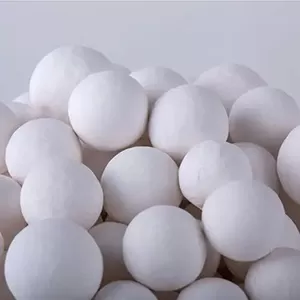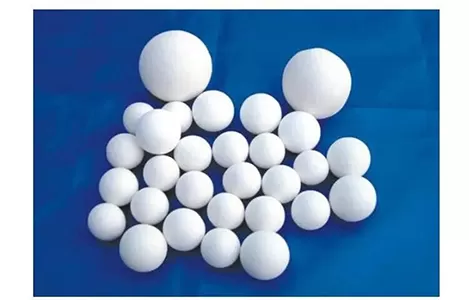Achieving pore - free ceramic balls involves strict control over raw material selection, molding processes, and sintering parameters, with steps like powder purification, high - pressure forming, and precise temperature control to eliminate internal and surface pores. Pores, whether open or closed, can weaken structural integrity, reduce hardness, and compromise performance in applications like high - pressure bearings or chemical packing, making pore elimination critical for high - quality ceramic balls.

Raw material preparation is the first line of defense against pores. High - purity ceramic powders with uniform particle sizes are essential, as impurities and irregular particles create voids during sintering. For example, alumina powders with particle sizes between 0.5 and 2 micrometers ensure tight packing, minimizing gaps that lead to pores. Powder purification processes, such as wet grinding and centrifugal separation, remove agglomerates and contaminants, further reducing pore formation risks. Additionally, drying powders properly—using spray drying to produce free - flowing granules—prevents clumping that would leave air pockets in the final product.
Molding techniques play a key role in achieving dense, pore - free structures. Isostatic pressing, which applies uniform pressure from all directions (typically 100 to 300 MPa), compacts powder into green bodies with minimal air entrapment. This method outperforms uniaxial pressing, which can create density gradients and hidden pores due to uneven pressure distribution. For complex shapes, injection molding with high - viscosity feedstocks ensures complete mold filling, while vacuum degassing of the feedstock removes air bubbles before molding. The goal is to produce green bodies with density exceeding 60% of the theoretical maximum, as higher initial density reduces the likelihood of residual pores after sintering.

Sintering parameters are critical for eliminating remaining pores. Gradual heating rates (50 to 100°C per hour) prevent rapid gas expansion, which can form new pores or enlarge existing ones. Holding the temperature at the sintering point (e.g., 1600°C for alumina, 1700°C for silicon nitride) allows particles to diffuse and bond, filling voids through densification. The sintering atmosphere is also controlled: oxygen - rich environments for alumina prevent carbon contamination, while nitrogen atmospheres for silicon nitride avoid oxidation, both of which could disrupt pore closure. For materials like zirconia, adding sintering aids (e.g., yttria) lowers the melting point of grain boundaries, promoting material flow to seal remaining pores.
Post - sintering processes can further reduce porosity. Hot isostatic pressing (HIP) subjects sintered ceramic balls to high temperature (1200 to 1800°C) and pressure (100 to 200 MPa) in an inert gas environment, eliminating closed pores that resist conventional sintering. This step is particularly useful for critical applications like aerospace bearings, where even tiny pores can cause fatigue failure. Machining and grinding, when done carefully, remove surface pores and irregularities, though excessive material removal can expose subsurface pores, so precision is key.
Quality control throughout production ensures pore - free results. Non - destructive testing methods like ultrasonic scanning and X - ray inspection detect internal pores, while microscopic analysis of polished cross - sections checks for surface and subsurface voids. For ceramic balls used as packing in high - pressure columns, pressure testing verifies that no pores exist to allow fluid leakage, ensuring efficient separation processes.
In summary, creating pore - free ceramic balls requires meticulous powder preparation, high - pressure molding, precise sintering control, and advanced post - processing. Each step targets pore formation mechanisms, resulting in dense, high - performance ceramic balls suitable for the most demanding industrial applications.



